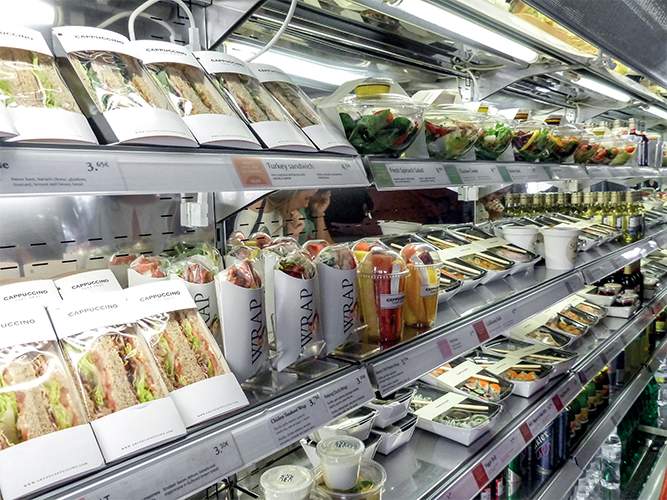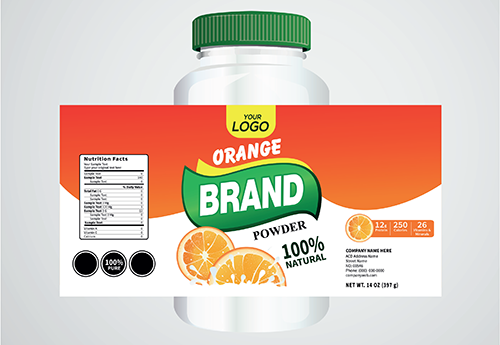
Make your mark
Substances and chemicals used in the design and manufacture of food and beverage packaging have attracted significant global attention in the last few years – with consumers calling for increased transparency on the substances used on food contact materials.
These substances include the inks used in the coding and marking and labelling of products and packaging. To protect consumer health and safety, food packaging inks are highly regulated and subject to an ever-changing regulatory landscape which can cause significant challenges for manufacturers.
In this article, Josie Harries sheds some light on the challenges faced by manufacturers when sourcing inks for food packaging applications and provides insight into what brands can do to ensure that the inks used in their coding and marking applications remain compliant with current and future regulations.
Why are inks important for food packaging?
Product labelling, and coding and marking, are a crucial part of global food and beverage markets – allowing food and beverage manufacturers to communicate key information to consumers, as well as to logistics workers, retailers, and anyone involved in global food supply chains.
For consumers, this may include expiration dates, ingredients, allergens, and nutritional values, as well as information on how certain ingredients have been sourced – e.g., whether a product contains sustainable palm oil or fair-trade cocoa.
From a wider supply chain perspective, batch, product, and traceability codes facilitate a product’s journey from manufacturer onto the supermarket shelf and are crucial in assisting with recalls on occasions when something goes wrong during production – e.g., in the event of undeclared allergens.
 With the above in mind, it’s vital to ensure that any codes included on food packaging will withstand the journey that a food product makes, and last throughout a product’s shelf life. The type of ink used will vary from substrate to substrate – for example, a durable, high-contrast ink suitable for cardboard boxes will have different characteristics and composition from one that is suitable for printing on the film lids of yoghurt pots, where the risk of smudging requires an ink with quick-drying properties.
With the above in mind, it’s vital to ensure that any codes included on food packaging will withstand the journey that a food product makes, and last throughout a product’s shelf life. The type of ink used will vary from substrate to substrate – for example, a durable, high-contrast ink suitable for cardboard boxes will have different characteristics and composition from one that is suitable for printing on the film lids of yoghurt pots, where the risk of smudging requires an ink with quick-drying properties.
But performance is not the only factor to bear in mind when developing inks for food packaging. As well as being robust, reliable, and fit for purpose, any formulation must also be safe to use with food products, requiring assurances that inks will not compromise the integrity of, or migrate through, product packaging, or pose a threat to consumer health if the ink comes into direct contact with food.
Spotlight on consumer safety
Consumer health and safety is a top priority when developing inks for food contact packaging. Food and beverage manufacturers have a moral and legal obligation to ensure that any ink used on food packaging is safe for its intended use – and we are also witnessing a growth in consumer interest in, and knowledge of, the chemicals included within food packaging.
For example, the use of per- and polyfluoroalkyl substances (PFAs), so-called ‘forever chemicals’, which are typically used to coat food packaging and make it grease- and water-resistant have come under significant criticism recently, with many US states restricting their use. Growing consumer awareness is leading to increasing demand for transparency in how products and packaging are manufactured.
Food producers are, ultimately, legally responsible for any ink used on their product packaging – so working with proven and reputable ink suppliers, who are aligned with key industry associations and able to advise and assist manufacturers with ensuring compliance is key to providing this transparency and assuring that inks are safe for use on food packaging. Regulations and guidance will vary depending on the countries in which products are sold.
The European Printing Ink Association (EuPIA), which counts Domino as an active member, has devised Good Manufacturing Practices (GMP) guidelines to help ink producers meet their obligations relating to articles that come into contact with food – including European Regulation (EC) No.1935/2004 and Regulation (EC) No. 2023/2006, and ISO9000 and ISO22000 standards. In the United States, similar advice is provided in guidelines relating to Current Good Manufacturing Practices (CGMPs), which are regulated by the US Food and Drug Administration.
Sustainability trends
Sustainability is another key area in the food packaging industry – and staying abreast of market trends in this space is essential, not just for food and beverage manufacturers, but also for ink manufacturers. Many major food and beverage manufacturers are currently exploring alternative substrates and materials, including recycled cardboard and plastic, compostable materials, and refillable packaging. Each one has its own properties, and inks must be designed with these in mind.
For example, with recycled cardboard and plastic packaging, it is important to consider ink properties that will not harm the recyclability of a substrate or contaminate the recycling stream. With the Plastic Packaging Tax being introduced to the UK in April 2022, which encourages the use of at least 30 percent recycled plastic in packaging, bearing these factors in mind will become increasingly important.
Taking end-of-life plans into account is also crucial. With compostable materials, manufacturers must ensure that the inks used on their packaging are in line with relevant regulations and will not compromise the usability of the composted material. For reusable packaging, ink coding solutions need to ensure inks stay on a product throughout its use but can be removed once the packaging is returned.
For any brand looking to explore alternative packaging solutions, partnering with a reliable coding and marking provider, who is willing and able to test and experiment with new and changing substrates, and provide details of migration testing, and food contact safety, is key.
A changing regulatory landscape
Aside from EU and FDA GMP compliance, the Swiss Ordinance List is another key regulatory framework relating to the suitability of inks for food contact materials. In the absence of global regulation, the Swiss Ordinance List is used by many large food and beverage manufacturers, including Nestlé, to ensure that their products and packaging remain compliant in all areas in which they are bought and sold.
Meeting regulatory requirements for printing on food packaging is a complicated business. Especially when you consider that the landscape for inks can change rapidly. The Swiss Ordinance List is regularly updated, and chemicals previously considered to be safe for printing on food packaging may be reclassified, which can potentially leave manufacturers without a globally compliant solution. Often, it’s not as simple as swapping one component for another as even a small change can have a significant impact on the ink performance, such as code legibility and durability, and printer efficiency, which can impact product quality and production reliability.
It can take as long as 12 to 18 months to develop new inks and formulations, so it is important that any ink is developed not just with current regulations in mind but looking forward to any potential reclassifications that may place. As such, it is important for food producers to work with proven, best-of-breed ink manufacturers, who have longstanding relationships with industry bodies, as well as with global food and beverage companies, and who are at the forefront of ink and packaging development.
Conclusion
Product labelling, and coding and marking, are a small but vital part of global food and beverage supply chains. Equally, the sensitive nature of food and beverage packaging means that inks used on food product packaging are highly regulated – and it’s up to brands to ensure that the inks used on their packaging are compliant.
Choosing the right supplier is key – brands should look for a partner with a robust and proven understanding of the global regulatory framework, and the in-house capabilities necessary to remain abreast of industry trends and provide globally compliant solutions, whatever the future holds.
For a list of the sources used in this article, please contact the editor

Domino Printing Sciences
Since 1978, Domino Printing Sciences has established a global reputation for the development and manufacture of coding, marking and printing technologies, as well as its worldwide aftermarket products and customer services. Today, Domino offers one of the most comprehensive portfolios of complete end to end coding solutions spanning primary, secondary and tertiary applications designed to satisfy the compliance and productivity requirements of manufacturers. These include innovative inkjet, laser, print & apply and thermal transfer overprinting technologies that are deployed for the application of variable and authentication data, bar codes and unique traceability codes onto product and packaging, across many sectors. For further information, please visit: www.domino-printing.com/en-gb/press-centre/about-domino.aspx